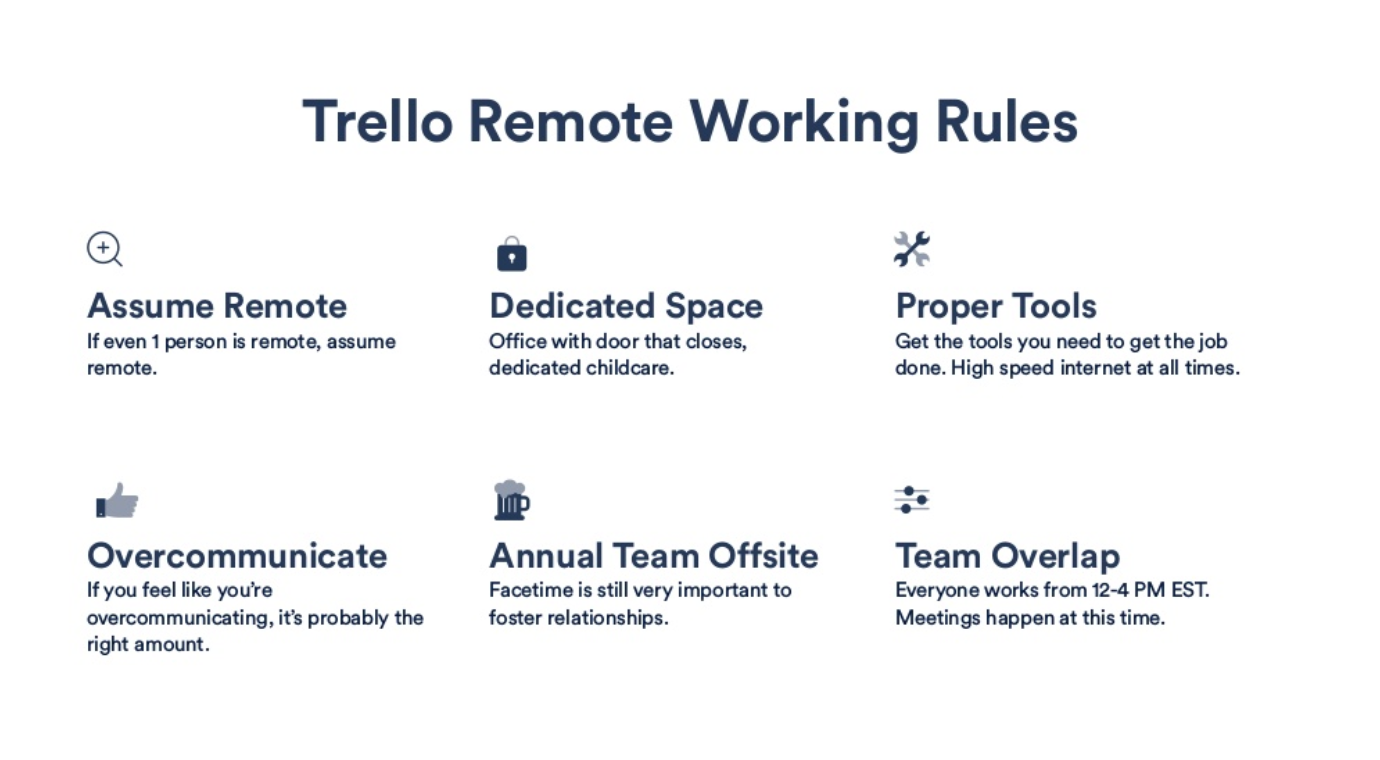Work and life are more intertwined than ever thanks to a drastic rise in remote work and an increasing dependency on technology.
As a remote worker, you don’t have the same physical separations of time and space that you get when working in an office. Your morning commute becomes a shuffle in your slippers to the next room over. And as you finally get into that productivity zone, you may realize it’s already 6 o’clock in the evening and you forgot to eat lunch once again. Or maybe you’re working from home with roommates or without childcare and it’s close to impossible to focus. These constant interruptions and distractions can make it extremely difficult to actually get work done on a daily basis.
If you’re feeling stress in your professional and personal lives, you’re not alone. National statistics in the US suggest that growing numbers of employees around the globe are feeling increased work-life stress and need new, improved strategies for managing work-life relationships.
Amidst all of this tension, it’s common to start looking for ways to “balance” your work and life. This coveted work-life balance is a quest many workers seek, but quite often fail to conquer.
The reason? You’re seeking the wrong solution! Instead, you’ll feel more ease and control in your life by managing and upholding better boundaries in all areas of your life.
Seeking Work-Life Balance? What You Need Are Better Boundaries
According to research by Ellen Ernst Kossek of Purdue University, effectively managing work-life boundaries can reduce role conflict and enhance the well-being of employees, teams, and organizations. It can also reduce stress, prevent burnout, and enhance mental and physical health.
Kossek further elaborates that one of the main culprits of blurred work-life boundaries is the constant use of technology (laptops, tablets, and smartphones) and social media.
“These changes have not only made work more portable, diffusing into more hours of the day, but have also made it easier to work during personal time and space, such as while commuting, when in ‘‘third places’’ including restaurants, and during vacations,” explains Kossek.
To top it off—many remote workers (specifically those new to remote work) are clocking in more hours than usual. A survey in April 2020 by Blue Jeans discovered that newly minted remote workers are tacking on an additional 3.13 hours per day while working from home.
Remote work allows for greater flexibility in schedules and the lives of workers around the world. However, many of us struggle to disconnect from work, step away from our screens, and set a crystal clear boundary between our digital and physical worlds.
doing some research for an upcoming @trello blog post — work + life are more integrated than ever with the rise in #remotework. in what ways do you set work/life boundaries as a remote worker?
if you have some other strategies or opinions, let me know in a reply!
— Janet Mesh (@meshymind) June 15, 2020
Since remote workers are not always physically visible to their teams and managers, they try to compensate by responding to every ping, ding, and question right when it comes in. This pressure to always be “on” or “in the know” causes many employees to constantly check their email inboxes, Slack messages, and social media feeds at all hours of the day even when they vow to stay in the present moment.
Without clear expectations from a team on how and when to work, mixed with too much screen time, remote workers can quickly blur the lines of work and life which can result in discouragement, resentment, and worst of all, burnout.
How To Set Healthy Work-Life Boundaries
1. Declutter Your Physical And Mental Space
Tidying expert and bestselling author, Marie Kondo, knows a thing or two about transforming spaces to help those who inhabit them “spark joy” and become more organized. Kondo is now tackling the business world to show workers and leaders that decluttering your desk and career can lead to big changes and success in your professional life.
In her book, Joy at Work: Organizing Your Professional Life, she provides tactics and advice on how to declutter not only your physical space but your digital workspace (think unnecessary meetings, emails, and tasks). Optimal remote workers have a dedicated office or area in their home to work. If you have a dedicated space like this to work from home, then follow Marie Kondo’s advice and only place items in that space that are related to work. Clear the rest out.

According to research by Harvard Business Review, less clutter will not only decrease your levels of stress and anxiety but will also help you to focus and process information better so that you are more productive at work.Of course, not everyone has this luxury of a dedicated space or home office to get into work-mode. If you can only carve out an area of your dining room table to work, then assess how you can organize and declutter the area. Consider placing plants or items in the room that help you focus.
You also need to declutter your mind in order to effectively set the right boundaries so you can protect your energy and come to work each day with a positive attitude. It’s easy to simply go through the motions of the workweek, but to keep your mind in top shape you can incorporate more moments of mindfulness into your day in order to become fully present and aware of what you’re doing and how you’re feeling.
Adopting an easy meditation routine (it can be just 5 minutes per day!) can help you focus your thoughts and develop more self-awareness. If you’re aware when and why you’re stressed or exhausted, these feelings become a trigger for you to lean into a boundary such as taking a screen break, going for a walk, or simply resting your eyes for 15 minutes before jumping back into a task or meeting.
2. Set And Stick To A Routine
As a remote worker, you no longer have to endure the traditional commute to the office in your car or on public transportation. However, it’s very important that you still simulate a start and end to your workday. Otherwise, you’ll find yourself staring at the clock in the afternoon realizing you’ve been in back-to-back meetings without changing out of your pajamas.
Your routine is yours to figure out but here are some rituals from high-performing people that you can incorporate into your own:
- Start your day with a sweat session. Jack Dorsey, CEO of Square, jogs every morning. Howard Schulz, CEO of Starbucks, bikes first thing.
- Prepare for sleep by turning off your screens, meditating, or reading a good book. A longtime insomniac, Tim Ferris, author of The 4-Hour Workweek, now follows a diligent routine for the hour before he goes to sleep. He swears by tea with apple cider vinegar and honey, a chapter or two of a book, and a soak in the bath.
- Eliminate repetitive decision-making by writing a daily to-do list or preparing your meals in advance.
For example, my morning routine includes the following: wake-up at 7 am, shower, get ready by doing my hair, makeup, and changing into a WFH outfit (yes, I still get ready even though I work from home!), enjoy my breakfast and an iced latte, and take my vitamins. Only until I’ve taken care of myself in the morning do I jump onto my laptop, greet my team in Slack, and start a day full of work and meetings. Of course, it’s not always picture-perfect—more often than not I scroll through my social media feeds and Slack messages while eating my breakfast or sipping my coffee. The goal is to respect the boundary—I won’t tackle a workday until I’ve completed my morning self-care routine.
In addition to creating a consistent routine, you can set clear boundaries in your schedule so you remember to take frequent breaks and even prevent decision fatigue.
Coined by Roy F. Baumeister, social psychologist and author of Willpower: Rediscovering the Greatest Human Strength, decision fatigue occurs after a long session of decision-making which results in low self-control and willpower. He and his colleagues discovered in a variety of studies that decision fatigue depletes self-control which results in emotional stress, underachievement, lack of persistence, and even failures of task performance.
So if you don’t pace yourself or set boundaries within your daily schedule, it’ll be easier to fall back into those bad habits like turning off your work laptop but then immediately picking up your phone to scroll through Twitter (guilty!). Physically closing your laptop at the end of the workday and avoiding your email inbox first thing in the morning are two very effective ways for setting a boundary between your work and personal life.
In addition to a defined morning and evening routine, time blocking is a productivity technique that helps you to gain more control over your time and energy throughout the day. It requires you to realistically assess your workload and schedule and make strategic decisions on how you’ll maximize your time while working.
First, you need to take a good hard look at your calendar and your task list. How long will each task take to complete? Is your calendar full of meetings? Which ones can you shorten or reschedule so you can have more uninterrupted time in your schedule to focus and get some deep work done?
To dip your toes into blocking your time, you can try the Pomodoro Technique.
This time management technique is simple:
- Take a large task you need to complete.
- Break it into smaller chunks.
- Pick one chunk to work on at a time.
- Set a timer for 25 minutes.
- Jam on that singular task for those 25 minutes.
- Take a 5-minute break.
- Repeat.
3. Make Time For Yourself
As you make progress in setting boundaries with your work time, it’s just as important to set boundaries in your personal life.
In a survey of more than 2,000 millennials, 70% of respondents agreed that they identify themselves only through their jobs. Now that’s a serious lack of boundaries. Hobbies, experiences, and healthy relationships make up a fulfilling life.
If you practice time-blocking with your work schedule, you can try it out for your personal life. If you have specific hobbies or interests, schedule that time into your calendar so they are prioritized and actually happen (baking bread, anyone?). When you have a tight deadline or need to help a co-worker, it can be easy to forgo your personal activities in order to be seen as a team player or productive worker.
For example, if you’re struggling to get in a daily walk, want to spend more time with your family, or finally dive into your reading list, then block that time off during specific days of the week in your schedule. If you can show up for your colleagues, you should show up for yourself, too!

“Me” time is also important so you can rest, process, and recharge. Just because you’re working from home doesn’t mean you don’t deserve vacation days or some much-needed downtime.
Science writer Ferris Jabr summarizes the benefits of downtime in this Scientific American article:
“Downtime replenishes the brain’s stores of attention and motivation, encourages productivity and creativity, and is essential to both achieve our highest levels of performance and simply form stable memories in everyday life … moments of respite may even be necessary to keep one’s moral compass in working order and maintain a sense of self.”
Even if you can’t book a tropical getaway, you can benefit just as much from a staycation. Burnout is real and you need to take time off from work (and even from the demands of your personal life!) in order to relax and rebuild your motivation.
Note: Making time for yourself means with yourself only. Of course, it’s important to spend time with family and friends, but carving out just a half-hour of time if possible in your day for your own hobby or relaxation will do wonders for your well-being. Yes, this means you should sometimes opt-out of that Zoom happy hour or take an extra-long shower so you can be alone with yourself.
4. Create Work & Communication Agreements With Your Team And Household
This may be one of the hardest tactics to implement because it requires collaboration from others but it’s crucial if you want to set strong and healthy work-life boundaries.
Setting boundaries doesn’t mean that you’re putting up a wall and/or need to act defensive whenever someone wants to talk to you. Boundaries are about respect. They allow you and others to respect your time and energy. However, your friends, family, and co-workers won’t know your boundaries unless you’re communicating with them.
If you’re on a remote team, you and your team should come to an agreement when everyone is available to work together during the day. You also want to be clear where communication happens. Does the team provide updates via email or in a digital collaboration tool like Trello? If someone has a question about a project, should they still use email or ask in a chat tool like Slack?
It may seem over the top, but being very specific about when and where communication and work happens can bring clarity and structure for everyone to work productively. For example, the Trello team has worked remotely for nearly a decade and their rule is that all teams must overlap their working hours from 12 – 4 pm EST. This creates a shared time that everyone is available to collaborate and/or meet.

Supportive and high-functioning teams bring their whole selves to work. Instead of discouraging people from sharing their personal lives, you can create digital spaces where the team can chat about shared interests and hobbies. An excellent way to do this is by creating Slack channels for work-related and non-work-related chatter like pets, TV shows, cooking, and travel. If you and your co-workers want to chat outside of “working” hours, then you can talk in these dedicated spaces which are less structured and informal.
If your co-workers are constantly bugging you then rely on the use of statuses in your chat tools to designate when you’re available to chat or not. If you clearly communicate that you’re heads down on a task or in a meeting, then your manager or colleague will know you can’t respond right away.
Don’t forget to let your team know when you’re signing off for the day as well. A simple “Offline until tomorrow at 9 am ET” can work wonders for setting a boundary.
These communication and work agreements also apply to your home life. Make a plan with your roommates, family members, or partner to identify which hours of the day require minimal noise and distractions. Remember: If you have children or family members at home then it’s important to communicate the hours you can and can’t work to your co-workers and managers.
Become Your Best Self Thanks To Clear Boundaries
One of the greatest benefits of remote work is that you have the freedom to manage your time. So remember to clear the clutter, develop a healthy routine, make time for your own passions, and communicate how and when you will be working with your team (oh yeah, and put your phone down more often!).
By creating and upholding strong boundaries with yourself, household, and team at work, you’ll invite less stress and more ease into your life. And just maybe, you’ll enjoy more moments of true work-life balance.







































